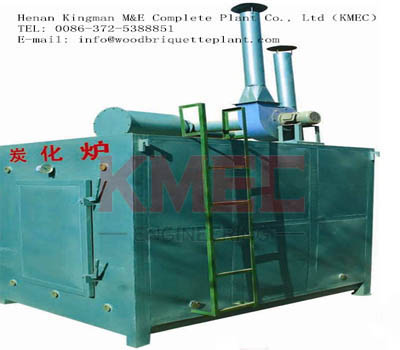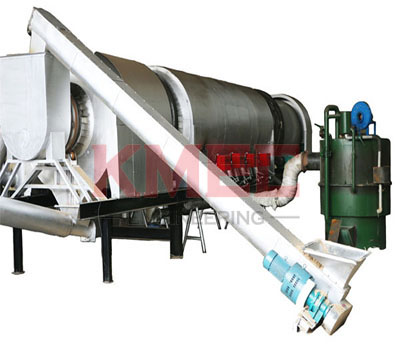The carbonation process of carbonizing furnace
Charcoal is a dark brown or black porous solid fuel left by incomplete combustion of wood or wood raw materials or pyrolysis under the condition of isolation from air. Charcoal is an impure amorphous carbon that keeps the original structure of wood and the tar remaining in the pores. Charcoal was used in the smelting of bronze wares in Shang Dynasty and iron wares in Spring and Autumn Period and Warring States Period, and its hygroscopicity was used to observe climate change.

There are two ways to make charcoal: earthen kiln or carbonizing furnace. The earthen kiln has a long history of burning charcoal. In the past, the earthen kiln method was basically used to burn charcoal. A earthen kiln was built, with a smoke outlet at the top and a kiln door at the front. The wood was tightly packed, and the wood was ignited. When the wood was completely burned, the smoke outlet of the earthen kiln was closed, and the charcoal was taken after cooling. The advantages of the earthen kiln are local materials, low cost, and very good charcoal discharging effect after skilled technology. However, burning charcoal in earthen kilns will produce a lot of smoke, which will cause serious air pollution, so the carbonizing furnace came into being. Compared with traditional earthen kilns, carbonizing furnace is much easier to operate and more friendly to the environment, which accords with the concept of sustainable development.
Generally, carbonization with carbonizing furnace can be divided into the following three stages:
First, drying stage.
From the ignition to the temperature of the furnace rising to 160℃, the moisture contained in the machine-made rod mainly depends on the external heat and the heat generated by its own combustion to evaporate. The chemical composition of the mechanism has hardly changed.
Second, the initial stage of carbonization.
At this stage, heat is generated by the combustion of the rod itself, so that the furnace temperature rises to 160~280 degrees Celsius. At this time, the wood material undergoes thermal decomposition reaction, and its composition begins to change. Unstable components, such as hemicellulose, decompose to produce CO2, CO and a small amount of acetic acid.
Third, comprehensive carbonization stage.
The temperature at this stage is 300~650 degrees Celsius. In this stage, the wood material undergoes rapid thermal decomposition, and a large number of liquid products such as acetic acid, methanol and wood tar are produced at the same time. In addition, combustible gases such as methane and ethylene are produced, and these combustible gases are burned in the furnace. Thermal decomposition and gas combustion generate a lot of heat, which makes the furnace temperature rise, and wood materials are carbonized at high temperature.
The above three stages belong to the most basic stage. To calcine high-temperature charcoal, in addition to the above three stages, we have to increase the heat, so that the temperature in the furnace will continue to rise to about 800C〜1000 degrees Celsius, so that the volatile substances remaining in the charcoal can be discharged, the carbon content in the charcoal can be increased, and the black structure of the charcoal will increase, and the conductivity will be strong.

The carbonization equipment produced and sold by KMEC mainly includes THL carbonizer and rotary carbonizer, both of which belong to retort carbonizer. If you need carbonization equipment, please contact us!

